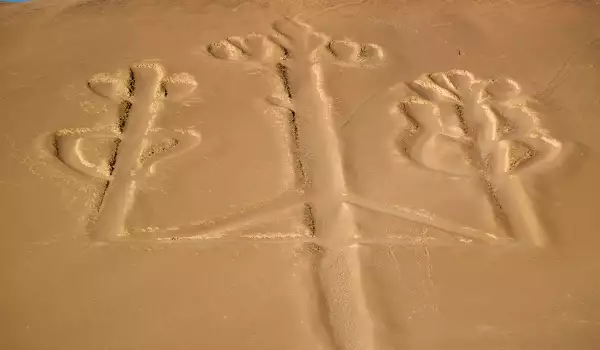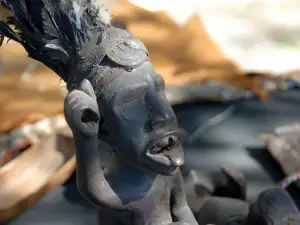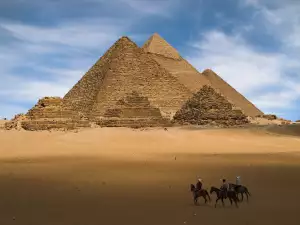Gerald Hawkins from Smithsonian Institute in Washington made a series of new studies of giant drawings in the desert Nazca. It became known to the disclosure of the mystery of Stonehenge in England, describing the building as a prehistoric astronomical calendar, Hawkins sought orientations of the star pieces.
Detailed studies of the lines of Nazca conducted by a research team from the University Colgate in New York, coordinated by the astronomer Anthony Avon. Through modern equipment in the rocky desert are "seen" prehistoric pathways, probably used as a route ofpilgrimage, although not yet clear what exactly they were. Maybe it was like a monkey model of ancient megahudozhnitsi-Christians.
Among the lines of Nazca they found rock piles and ceremonial sites with archaeological finds, mainly religious attributes and pieces of pottery, dating from II to VII century, when the Nazca culture has flourished, and VII-II century BC, when civilization flourished Parakas predecessor.
What was this giant hand painted pictures of the Spider-Monkey?
The complex of geometric drawings, anthropomorphic and zoomorphic figures forms and extends over an area of 800 sq. km. The signs of the Nazca lines when superimposed makes hundreds of different width and length of over 10 kilometers along to geometric figures, dozens of abstract shapes and dozens of paintings with images of animals such as the spider-monkey. The dimensions of these are in the range of between 15 meters wide and 300 m in length.
After the new archaeological and anthropological finds of the American territories at the end of the millennium, appears, a new opportunity to explain the phenomenon of Nazca. Scientists increasingly believe that it is all associated with shamanistic rites and ceremonies in which the ancient spiritual ringleader in a state of trance is communicating with their ancestors, with the inhabitants of the world of spirits and gods.
It is known that Shamanism has played a leading role in the ancient civilizations of Peru's territory. In the northern part of the country they have discovered the ruins of the temple Kawi de Huantar from 800 BC. Over the centuries a cult glorifies a stronghold of shamanism.
Integral part of this type of culture is to communicate with the spirit world and also the adoption of hallucinogenic substances. When in the course of a shaman ritual would take a strong drug mescaline one would feel that his body is transformed into a body called Nagual a power animal that is a panther in the region of the Andes. The process is "read" in a series of incised designs among the ruins of Kawi de Huantar depicting the stages of transformation of the shaman into the Nagual.

American anthropologist Marlen Dobkin de Rios launched the hypothesis that the shapes of the Nazca embody the spiritual flight of the shaman, and shamanic transformations are present in animals of power, they are signs to one supernatural power placed to placate the spirits of hostility.
Dobkin de Rios summarizes the visual sensations and mental forms and patterns in the states of trance. Paul Devryo and many researchers argue that the Nazca lines depict shamanistic landscape in which such a map has marked a kind of geography of the spirit.













